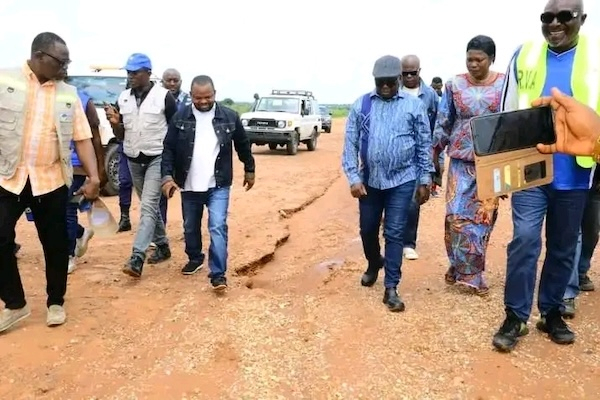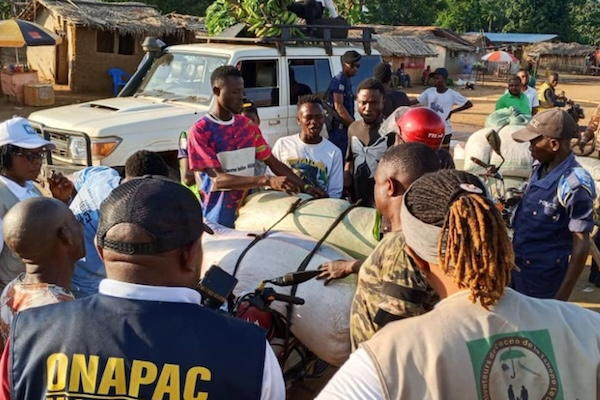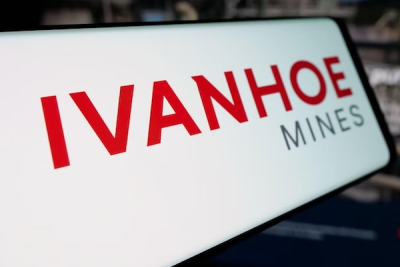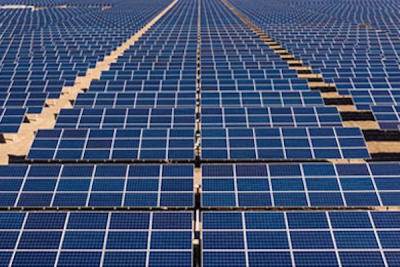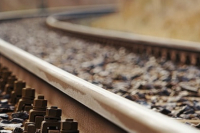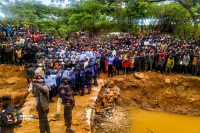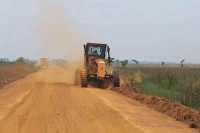
News (571)
- Heavy rains have rendered Tshikapa’s runway unusable since 22 November.
- A $400,000 pre-financing meant to launch rehabilitation works remains unaccounted for.
- The shutdown threatens to further isolate the Kasaï region, already struggling with limited road access.
Tshikapa’s airport has halted all flights since 22 November after heavy rains severely damaged its runway, local authorities said on Wednesday. Kasaï Governor Crispin Mukendi Bukasa inspected the site and confirmed that “the runway is totally deteriorated and can no longer receive an aircraft.”
Mukendi said the rehabilitation project had been announced a year ago. The contractor received $400,000 in advance funding but did not start any work. “We want to know how this money was used. The works must begin immediately,” he said.
He stressed that the project aligns with the President’s plan to modernize the country’s aviation infrastructure, adding that Kasaï residents will no longer accept unjustified delays in public-works execution.
Tshikapa Airport is listed among the projects financed under the Sino-Congolese cooperation program. Several Congolese companies had been selected, but they failed to launch construction because the Sino-Congolese Infrastructure Company (SISC SA) required financial guarantees.
The Agency for the Supervision of Collaboration Agreements (APCSC) later asked BGFIBank to provide those guarantees. During an August 21 meeting, the bank reportedly agreed to back the companies involved.
The airport serves as a critical transport link for passengers and cargo in Kasaï, a region with already limited road access. Its closure threatens to intensify isolation, disrupt trade, block freight flows and hinder humanitarian operations.
This article was initially published in French by Boaz Kabeya
Adapted in English by Ange Jason Quenum
Congolese agricultural authorities on Tuesday began seizing unfermented cocoa beans in the Mambasa territory of Ituri province, local media reported.
The operation, carried out by the Office National des Produits Agricoles (ONAPAC), aims to stop practices that are hurting cocoa quality in the region. The decision follows resolutions adopted at the second general assembly of coffee and cocoa farmers held in October.
ONAPAC will be assisted by the Local Council for Coffee, Cocoa, and Other Agricultural Products for Rural Development, the anti-fraud unit of the Congolese National Police, and the Mambasa Peace Court to enforce the regulations.
Other measures will also take effect, local media said. These include a formal ban on roaming, informal buying practices to combat fraud, curb unfair competition, and improve traceability. Buyer identification will also be required to secure transactions and strengthen accountability in the supply chain.
The measures come amid a sharp drop in cocoa prices in October. Local media reported that the price per kilogram fell from 20,000 Congolese francs to 6,000 francs in several buying houses in Mambasa and Irumu.
While global prices have been affected by a production recovery in West Africa, part of the local collapse is due to quality issues. Dieudonne Kambale, an agronomist with ESCO Kivu, quoted by 7sur7.cd, said the region’s cocoa suffers from insufficient fermentation. Although beans should ferment for about a week, many producers dry them directly in the sun for only two to three days before selling.
The head of the local buyers’ association for agricultural and perennial products, Mumbere Musumba Jackson, made the same point in July.
Timothée Manoke
- QIA and Ivanhoe sign an MoU to expand cooperation on critical minerals.
- The deal follows QIA’s $500 million investment for a 4 % stake in Ivanhoe.
- Gulf states intensify investments to diversify beyond oil and secure supply chains.
Qatar’s sovereign wealth fund, the Qatar Investment Authority (QIA), signaled its intention to strengthen its partnership with Ivanhoe Mines during the Emir of Qatar’s visit to Kinshasa. The two parties signed a memorandum of understanding to frame cooperation on future projects involving critical minerals, according to a statement issued on November 21, 2025.
The head of the QIA, Mohammed Saif Al-Sowaidi, said the agreement shows the fund’s commitment to building strategic partnerships with major suppliers of critical minerals to support global efforts to develop new energy infrastructure and power advanced technologies.
The move comes less than two months after the fund entered the Canadian company’s share capital. At the end of September 2025, Ivanhoe Mines completed the issuance of 57.5 million shares to the QIA, which now holds about 4 % of the company.
The transaction enabled Ivanhoe to raise nearly $570 million, including $500 million from the QIA and $70 million from Zijin Mining, which exercised its right to maintain a 12.2 % stake to avoid dilution. CITIC did not exercise this right.
No additional financing was announced, but the MoU clearly opens the door to potential financial support from the QIA for Ivanhoe’s projects. According to Ivanhoe Mines, the agreement sets a framework for cooperation in the exploration, development, and supply of critical minerals needed for the global energy transition and for advanced technologies. It also reflects QIA’s interest in Ivanhoe’s future projects, including in the Makoko district in the DRC.
The latest estimates published by Ivanhoe in May 2025 point to 8.38 million tons of inferred copper resources across the Makoko, West Makoko, and Kitoko deposits, which are still at the exploration stage. Ivanhoe describes this cluster as one of the highest-grade discoveries in the world and the fifth-largest copper discovery of the past decade.
The MoU also notes that the QIA could use its network of financial institutions to secure preferential financing for critical mineral projects in Africa and elsewhere. The planned cooperation also covers potential mergers and acquisitions, participation in mining-related infrastructure such as logistics, energy, and water, and the joint development of refining or downstream processing capacity.
Alongside its work in the DRC, Ivanhoe is carrying out exploration programs for new sedimentary copper discoveries in Angola, Kazakhstan, and Zambia.
This momentum comes as Gulf countries scale up investments in African strategic minerals, especially the United Arab Emirates and Saudi Arabia. These states aim to diversify portfolios traditionally centered on oil, prepare for the post-oil era, and secure supplies needed for battery and low-carbon technology value chains.
According to data from the Critical Minerals: Pivotal Outlook platform, reported by Energia-Africa, Gulf countries invested $2.2 billion in African critical mineral projects during the first half of 2025. Several initiatives are emerging. Al Mansour Holding, a Qatari conglomerate, announced more than $100 billion in investments in Africa, with around $21 billion potentially dedicated to the DRC in sectors including mining.
Meanwhile, the UAE is expanding its presence through International Resources Holding, a subsidiary of IHC, which signed an agreement in June to acquire 56 % of Alphamin, operator of the Bisie tin mine — the largest in the DRC — for an estimated $367 million.
Timothée Manoke
-
EU allocates €10 million in non-lethal support under the European Peace Facility
-
Assistance includes command, medical, and deployment equipment for the FARDC
-
Measure follows a €20 million package adopted in 2023 for the rapid reaction brigade
The Council of the European Union has approved a new €10 million ($11.52 million at the current rate) assistance measure for the Armed Forces of the Democratic Republic of Congo (FARDC), under the European Peace Facility (EPF). The funding is intended to provide non-lethal military equipment aligned with the operational needs of the Congolese forces, according to the official statement issued by the Council.
The support consists of non-lethal equipment for command and control, deployment conditions, medical support, and surveillance patrols along river borders. The first deliveries are expected before the end of 2026, the Council said.
According to the European institution, this assistance will strengthen the capacity of the Congolese armed forces to carry out their missions to protect civilians and restore state authority, in a security context marked by the continued presence of armed groups in the east of the country.
This decision is the second European support measure for the FARDC. The first, adopted on July 20, 2023, amounted to €20 million to support the 31st rapid reaction brigade based in Kindu. It was implemented in collaboration with the Belgian Ministry of Defense, which was involved in training the brigade.
That support included non-lethal individual equipment, IED-countering kits, vehicles, radios, and the rehabilitation of the brigade headquarters. The EPF’s monitoring framework also ensured oversight of equipment use and compliance with international human rights standards.
-
AEE Power plans to invest $42.7 million to build a 14.04 MW hybrid mini-grid for Mwene-Ditu.
-
The system will combine solar, battery storage and backup thermal generation to guarantee reliability.
-
The mini-grid will serve up to 25,018 clients within five years, with electricity sales expected to reach 34,192 MWh by Year 10.
AEE Power, a pan-African developer specialized in power infrastructure in sub-Saharan Africa, plans to invest $42.7 million to build a 14.04 MW mini-grid designed to electrify Mwene-Ditu, the second-largest city in the Lomami province. The company presented the project during a workshop that gathered local economic operators, organized in partnership with VSI Afrique, a consulting firm focused on energy and infrastructure.
The future mini-grid will combine solar generation, battery storage and backup thermal power. The company plans to install 14.04 MWp of photovoltaic solar capacity (11.7 MW AC) alongside 4.128 MWh of storage with 1.032 MW output. A 2.53 MVA thermal plant will secure continuous supply when solar energy falls short.
Roger Ilunga Tshintu, AEE Power’s representative, said the distribution network will include 46.39 km of medium-voltage lines, 96.37 km of low-voltage lines, 20,990 prepaid meters for residential and commercial users, and 2,313 public lighting points.
AEE Power expects the mini-grid to serve 14,690 customers during its first year of operation and 25,018 clients by its fifth year. Electricity sales should reach 13,471 MWh after five years and 34,192 MWh by Year 10.
The project will supply households, SMEs, public buildings, hospitals, and telecommunications facilities. The company intends to design the infrastructure to ensure 50% renewable penetration with less than 2% downtime.
AEE Power already operates in the Democratic Republic of Congo across generation, transmission and distribution. Its flagship projects include the 11 GW Inga 3 hydropower project, the Fungurume–Kasumbalesa and Goma–Bukavu high-voltage lines, and the Kinshasa distribution network, which includes nearly 19,600 new connections.
This article was initially published in French by Ronsard Luabeya
Adapted in English by Ange Jason Quenum
Visa has reiterated its intention to partner with the Democratic Republic of Congo's central bank (BCC) to modernize the country's financial system. In a letter dated November 20, 2025, Visa's Senior Vice President for Central and West Africa, Aminata Kane, informed BCC Governor André Wameso of the commitment on behalf of Visa President Oliver Jenkyn.
According to a note from the BCC, the cooperation will focus on three areas. The first is the creation of the BCC's Financial Innovation Center, intended to position the DRC as a francophone technological and regulatory hub for digital payments, market financial infrastructure, and fintech solutions.
The second area involves strengthening financial inclusion through programs targeting universities and the public administration to accelerate the adoption of modern, secure payment methods. Finally, Visa plans to support investment in Congolese fintechs, particularly those developing digital solutions for financial inclusion.
The two institutions have agreed to set up joint technical teams to finalize an operational roadmap in the coming days. The move follows discussions held on the sidelines of the IMF and World Bank Annual Meetings in October.
The mobile payments market in the DRC is experiencing steady growth. According to the GSMA, the value of transactions is expected to reach $3.85 billion in 2025, representing a compound annual growth rate of about 19%.
In September, Visa launched VisaPay, an application that allows consumers to make digital payments easily. At the same time, Visa partnered with Onafriq, a pan-African digital payment network, to connect VisaPay with the country's leading mobile money wallets, including M-Pesa, Airtel Money, and Orange Money. This interoperability allows users to fund a Visa account directly from a mobile money platform.
Ronsard Luabeya
Afriland First Bank DRC is set to lose its teacher-payroll and school operating-fund contracts in five administrative areas, according to a November 14, 2025, document from the National Control Directorate (DINACOPE). The contracts will be reassigned to four other financial institutions after repeated service failures.
The portfolio being withdrawn covers 29,513 teachers, 2,039 schools, and a combined monthly volume of roughly 12 billion Congolese francs (CF) in salaries and operating costs, according to the same DINACOPE document seen by Bankable.
Under the reallocation, operations previously handled by Afriland will be transferred as follows: FirstBank will take over Gemena Ville (Sud-Ubangi); Equity BCDC will manage Idiofa (Kwilu); FINCA will handle Tshikapa 1 (Kasaï); IFOD will take Yumbi (Maï-Ndombe); and TMB will assume responsibility for Nyunzu (Tanganyika), DINACOPE said. The shift underscores operational problems that have long affected Afriland in this segment.
The decision was prompted by delays in salary payments and a series of irregularities attributed to Afriland First Bank DRC. Teachers’ unions and local elected officials in the affected areas had filed multiple complaints, criticizing the bank’s practices and urging authorities to transfer the payroll contracts to other institutions, often citing Equity BCDC, FINCA, or TMB as preferred alternatives.
Grievances had been building for months, including payment delays of up to two or three months, allegedly unlawful deductions, harassment at payment sites, selective or partial payments, inadequate facilities at payout locations, and a complete lack of standard banking services. In Idiofa (Kwilu), the teachers’ union had threatened to launch a strike on November 7, 2025, if no corrective action was taken. Separately, National Deputy Boris Mbuku Laka asked the Finance Minister in writing to move the teacher-payroll contract away from Afriland First Bank.
These developments follow a September 12, 2025, statement by Afriland First Group, which is headquartered outside the DRC, distancing itself from Afriland First Bank CD. The Congolese subsidiary has been under temporary administration since July 2021 after a decision by the Central Bank of Congo. The Group says the DRC unit is now fully managed by the government, which it accuses of trying to strip the original shareholders of their ownership. Afriland First Group says it launched proceedings in August 2023 before the International Centre for Settlement of Investment Disputes (ICSID) to challenge the government’s actions.
Timothée Manoke
The Democratic Republic of Congo has issued an international call for expressions of interest to build a national rail manufacturing plant, the transport ministry said.
The initiative builds on a project unveiled in October 2025 to establish train assembly and manufacturing plants in Matadi and Kalemie, aimed at producing several dozen locomotives and wagons a year and training local engineers and technicians.
The rail plant project covers three sites: Kisangani, Kinshasa and Banalia. The main facility in Kisangani will house hot rolling mills for producing UIC54 and UIC60 rails. Kinshasa will handle machining, quality control and storage for export and western transport corridors.
The Banalia site, in Tshopo province, will focus on extracting and processing raw materials such as iron ore, limestone, and coking coal. The wider complex will include electric arc furnaces, metallurgical laboratories, test benches, a hybrid hydro-solar power plant, and an industrial training centre.
The proposed structure is a Build-Own-Operate-Transfer public-private partnership or an industrial joint venture. It would bring together the Congolese state, specialised industrial partners, and international investors, including the African Development Bank, the European Investment Bank, the World Bank, Afreximbank, TDB, and Eximbank.
A special-purpose vehicle will oversee the design, financing, construction, and operation of the infrastructure.
Applications must be submitted by March 9, 2026. Required documents include a letter of interest, a detailed consortium description, legal and administrative paperwork, technical references, financial statements for the past three years, and a concept paper outlining the technical approach, the PPP financing model, the technology transfer plan, and the implementation schedule.
Boaz Kabeya
The Democratic Republic of Congo's mines minister announced the creation of 64 artisanal mining zones on Monday, Nov. 17.
The announcement was made during a crisis meeting in Kolwezi, held two days after a November 15 accident at the Kalando mine that killed around 40 artisanal miners.
"I can officially tell you today that at least 64 artisanal mining zones have been cleared for you," Mines Minister Louis Watum Kabamba said.
Identifying these zones was the first part of a plan presented by President Felix Tshisekedi during a June 13 council of ministers meeting to curb "the perverse effects denounced in artisanal mining" in Lualaba province, as soon as possible."
Among the problems identified by the head of state was the invasion of industrial mining concessions by artisanal miners, generating cohabitation tensions. The Kalando site is one example. Located 42 kilometers southeast of Kolwezi, it sits on a permit (PE 2116) belonging to Chemical of Africa (Chemaf), which said it ceded the permit to Pajeclem Congo Consulting Sarl on July 21. Artisanal miners access it only on weekends under a "social" authorization, a situation conducive to tension.
President Tshisekedi had requested that the identified zones be "likely to meet the expectations of the sector." The ministry said the 64 zones were determined following joint work with specialized services and validated after several technical field missions.
Minister Watum Kabamba said the decrees establishing these zones have already been signed. It is not yet known when the sites will be made available or when work can begin.
State cobalt monopoly central to formalization plan
Mining in the zones is expected to be conducted in collaboration with the state-owned Entreprise Générale du Cobalt (EGC), a subsidiary of Gécamines, which holds a monopoly on trading artisanal production of strategic minerals like cobalt.
EGC said it has implemented a model to align the artisanal sector with international standards to facilitate the commercialization of its production. The model relies on deploying "controlled mining areas, equipped with weighing devices, direct payment mechanisms and digital tracking systems, guaranteeing that each ton is traceable from the artisanal site to the processing plant."
To allow EGC to exercise its monopoly fully, President Tshisekedi has demanded the strict application of all rules, including sanctions, against processing plants and entities that illegally purchase artisanal cobalt, bypassing EGC's legal monopoly. He also called on Gécamines and its subsidiary to strengthen their financial collaboration. EGC needs funding to offer artisanal miners competitive prices and cash payments to capture a significant share of production.
In a bid to attract investors, EGC presented its first production of 1,000 tons of what it called "structured, ethical and traceable" artisanal cobalt in Kolwezi. Despite the recent accident, artisanal activity continues at Kalando "to maintain social stability.”
Pierre Mokoko & Ronsard Luabeya
The National Road Maintenance Fund (FONER) launched on November 20, 2025, in Inongo, the capital of Mai-Ndombe province, a road maintenance program covering the rehabilitation of 280 kilometers of roads. The governor, Lebon Nkoso, officially opened the project, which aims to improve internal connectivity and support economic activity.
The program spans seven of the province’s eight territories: Yumbi, Kiri, Mushie, Kutu, Inongo, Oshwe, and Bolobo. Only Kwamouth is excluded due to ongoing insecurity.
Several priority sections have been selected, including Bolobo–Ngemu (30 km), Boulevard Ngobila–Yanzalinga (10 km), Banzomoke–Ponde (35 km), Modeo–Nkondi (30 km in Kiri), and Kutu Panza 3–Itwa (35 km in Kutu), among others.
Execution of the works has been entrusted to the Office des voies de desserte agricole (OVDA) for a three-month period. According to provincial director Deo Gratias Ngontula, monthly assessments will be conducted to monitor progress and quality.
Governor Lebon Nkoso noted that this program is a key development tool for the province. He called for rigorous implementation to ease the movement of goods and people across the region.
In addition, two territories in Mai-Ndombe are part of another program covering 103 kilometers of agricultural roads leading to major production areas, identified last July by the Social Fund of the Republic. Their rehabilitation, also assigned to OVDA under the Value Chain Development Support Project, includes the construction of four bridges and three small port facilities, two in Inongo and one in Bokoro.
More...
- Emir Sheikh Tamim’s visit leads to one agreement and five MoUs with the DRC
- Cooperation spans ports, justice, youth, sports, and a social project in South Kivu
- Qatar’s growing footprint includes major investment intentions and involvement in peace efforts
Qatar’s Emir, Sheikh Tamim bin Hamad Al Thani, made an official half-day visit to Kinshasa on November 21, 2025. He was received at N’djili International Airport by President Félix Tshisekedi. The two leaders held a private meeting, the content of which has not yet been disclosed, before witnessing the signing of one agreement and five memorandums of understanding, underscoring their ambition to strengthen bilateral cooperation.
The agreement provides for visa exemptions for holders of diplomatic and special passports in both countries. The five memorandums express each party’s intention to cooperate in economic, legal, diplomatic, social, and sports-related areas.
One memorandum concerns port cooperation between Qatar Ports Management Company (Mwani Qatar) and the National Transport Office (ONATRA SA) for the development and management of Congolese port infrastructure. Two others open the way for closer ties between the two countries’ justice ministries and for cooperation in youth and sports.
The Qatar Fund for Development and the Congolese Ministry of Social Affairs also signed a memorandum to support a multisector emergency project in the South Kivu province. Another document establishes regular political consultations on issues of mutual interest.
On September 2, 2025, Kinshasa hosted the Emir’s cousin, Sheikh Al-Mansour Bin Jabor Bin Jassim Al Thani, head of Al Mansour Holding. During that visit, 18 memorandums of understanding were signed between the Qatari private conglomerate and the DRC. These investment intentions, totaling 21 billion $, cover fifteen sectors, including mining, infrastructure, health, agriculture, and hydrocarbons.
Between Kinshasa and Kigali
For now, cooperation between the DRC and Qatar remains at the stage of intentions for most of the announced projects. However, the scale of these commitments reflects Doha’s ambitions in the country. This interest is also visible in Qatar Airways’ decision, in June 2024, to add Kinshasa to its list of destinations.
It is also known that Ivanhoe Mines announced on September 17, 2025, that it had reached an agreement enabling the Qatar Investment Authority (QIA), Qatar’s sovereign wealth fund, to join its shareholding. In the DRC, Ivanhoe Mines holds 39.6% of Kamoa-Kakula, the country’s largest copper mine, and 62% of the Kipushi zinc mine, recently restarted and poised to enter the global top four. The company is the operator of both strategic sites.
Qatar is also involved in peace efforts in eastern DRC due to its close relations with Rwanda, which supports the AFC/M23 rebels. On the eve of his visit to Kinshasa, the Emir was in Kigali. Sheikh Tamim bin Hamad Al Thani and President Paul Kagame discussed the strengthening of their bilateral relations.
According to Rwandan authorities, trade between Rwanda and Qatar has grown by more than 30% in five years. Doha has also invested in Kigali’s new airport and in the national airline RwandAir.
Heineken announced that it transferred its Bukavu brewery to Mauritian company Synergy Ventures Holdings Ltd for a symbolic 1 €, after losing operational control of its facilities in eastern Democratic Republic of Congo (DRC). The loss of control is linked to the occupation of the Goma and Bukavu sites by armed groups since June 12, in a context marked by the advance of the M23 in North and South Kivu. (Reuters / Madis Invest)
According to the announcement relayed by Reuters on November 19, 2025, the sale was motivated by humanitarian concerns: preserving jobs and livelihoods, maintaining essential community services, and preventing any misuse of the facilities in an unstable security environment.
It remains unclear how Synergy Ventures plans to restart operations at the Bukavu brewery. The announcement states that the company will assume all responsibilities related to operating the site, including production activities, staff management, and tax obligations. Heineken, for its part, retains a three-year buyback option should security conditions allow a return.
The outlook remains uncertain. Despite the signing on November 15, 2025, in Doha (Qatar), of a Framework Agreement for comprehensive peace in eastern DRC between the Congolese government and AFC/M23 rebels, fighting continues on the ground.
As early as March, Bralima suspended operations in Goma, Bukavu, and Uvira due to raids and looting targeting its warehouses. The rapid deterioration of the situation led to the full evacuation of remaining staff in these three cities on June 20, affecting about one thousand direct and indirect jobs.
These facilities represented a major asset for the group’s Congolese subsidiary. According to internal Bralima data, Goma, Bukavu, and Uvira accounted for nearly one-third of its revenue in the DRC, where Heineken operates five breweries established since the 1920s.
- Nearly 180 trucks from Kisangani remain immobilized on the Makana–Mengwe section of RN3.
- Local markets in Walikale report rising prices and declining stocks of essential goods.
- Transporters urge provincial and national authorities to launch emergency rehabilitation works.
The Walikale territory in North Kivu faces a growing risk of supply shortages in essential goods. The advanced degradation of National Road No. 3 (RN3), which links the region to Maniema, has disrupted the circulation of goods for nearly a month.
Local sources report that almost 180 trucks from Kisangani remain immobilized on the Makana–Mengwe section, located on the border between Walikale (North Kivu) and Lubutu (Maniema). Heavy rains have turned several portions of the road into deep mud, which makes vehicle passage nearly impossible.
The Association des Chauffeurs du Congo (ACCO), quoted by Actualité.cd, states that 120 vehicles remain blocked between Makana and Makote in Walikale territory. ACCO adds that 80 additional trucks remain bogged down between Losso and Mengwe on the Maniema side.
This situation significantly slows traffic along a corridor that remains essential for supplying remote areas of North Kivu.
The disruption already affects several consumption centers, including Makana, Biruwe, Logu, Ndjingala, Mubi and central Walikale. Local traders report rising prices for basic commodities and gradually declining inventory levels due to irregular resupply. Some imported products from Kisangani have begun to disappear from local markets.
In response to the prolonged paralysis, transporters call on provincial and national authorities to launch urgent rehabilitation works on the affected road segments. They argue that a rapid intervention would restore traffic and prevent a broader supply crisis in the region.
This article was initially published in French by Ronsard Luabeya
Adapted in English by Ange Jason Quenum
On November 19, Rome Resources announced its plan to raise £1.9 million ($2.4 million) through a share placement. The funds, still subject to regulatory conditions, will be used to finance a new drilling program at the Bisie North tin project the British company is exploring in the Democratic Republic of Congo.
Rome Resources says the campaign aims to test priority targets on the site, especially the deeper zones of the Kalayi and Mont Agoma deposits. The company estimates that the work has a discovery potential of between 53,000 and 144,000 tons of mineral resources. This target could increase the 10,600 tons of inferred resources declared last month at Bisie North.
“The board is highly encouraged by the technical foundations laid by the recent maiden mineral resource estimate, which clearly highlights the high-grade potential at both Kalayi and Mont Agoma. We are now looking forward immensely to testing the high grade tin potential of Kalayi deep, a key upside indicated by the recent maiden mineral resource estimate,” said Paul Barrett, CEO of Rome Resources.
Pending the financing, the company expects to start drilling in “approximately two weeks.” The work should continue for 3 to 4 months. Meeting these goals could further position Bisie North as a potential contributor to Congolese tin output, which was 99 % supported in 2024 by Alphamin Resources’ Bisie mine.
Aurel Sèdjro Houenou, Ecofin Agency






